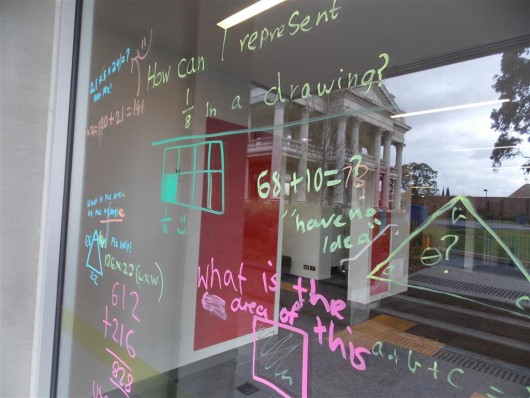In Senior School Assembly on Monday, I spoke to the girls about my desire for Lowther Hall to be a school where girls feel high levels of confidence in their ability to master mathematics. I want every girl to know that she can have access to great assistance with maths. I want there to be plenty of people in our school who can explain maths well. I want every girl who is mystified by a maths problem or process to be able to find lots of people who can help her sort her way through it. I want her to feel like a really good maths learner – one who understands that errors are the key to understanding, one who isn’t too scared to give it a go, one who feels confident to approach things in different ways. Most of all, I want every girl to feel that if she isn’t very good at maths yet – with time and effort – she can be.
I also shared with the girls the disturbing trend in the Australian results from the last 10 years of testing in the Program for International Student Assessment (PISA) which show a steady decline in mathematical performance, and the worrying fact that this decline is more pronounced nationally in girls than in boys. I suggested that in order for us to ensure that our School did not conform to these patterns, that we needed clear, united action to build skills and confidence in maths at Lowther Hall, and that part of this action would be to make our maths learning more visible by sharing some of it on the glass surfaces around the School. Now whilst encouraging the girls to “write on the walls” might at first seem a slightly unorthodox idea, there are 2 concepts, supported by educational research, which underpin the practice of having students write their maths learning on the glass. The first is around Peer Assisted Learning (PAL). When students help each other, there have been shown to be clear educational benefits. In fact, at Harvard University, their Physics lectures have sections where the lecturer stops lecturing while the students work together to attempt a physics problem, helping each other and answering each other’s questions. This does not represent a shirking of responsibility by the lecturers, but rather, it is a decision informed by the knowledge that collaborative learning amongst students has very positive and powerful results. Indeed, the week after next, the two Deputy Principals and I are heading to Adelaide to a conference hosted by the Australian Council for Educational Research where we will learn more about recent findings in the area of student collaboration. So, when students write maths problems on the glass, which perhaps they are struggling with, they can get help from other girls. If they write out a problem they are working through successfully, they provide an example that other girls can learn from. Suddenly, we move from having a small number of teachers assisting girls to build confidence and skills in mathematics, to having hundreds of individuals working towards these outcomes. The second concept which underpins this practice is the idea of making learning visible. You may recall that earlier in the year, Lowther Hall was visited by a world expert on the impact of physical surroundings on learning, Stephen Heppell. He raved about our school. He thought the buildings – Sampford House, the Forum, the Noelene Horton Centre – were state of the art – and he thought the way the girls inhabited the spaces and moved the furniture to maximise their learning was outstanding. But he observed that there was not very much maths visible around the School and reminded us that there is a body of research to show that when you can see the learning, more people learn it. This week, there has certainly been much discussion about maths learning across the School. I am looking forward to seeing this sustained through the year and to seeing increased confidence in our maths learners!

